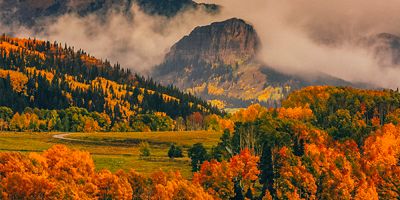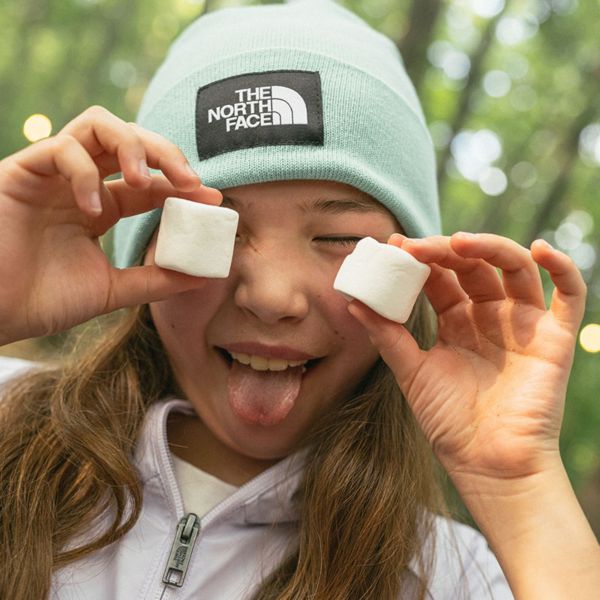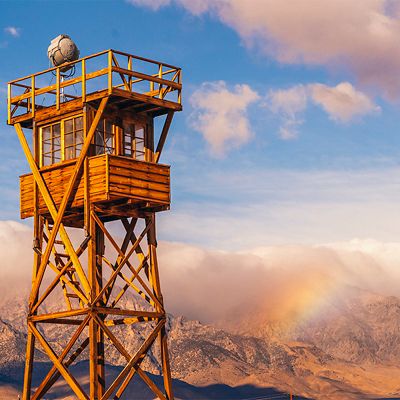Hiking
You don’t have to hike 2,722 feet down to the canyon floor to enjoy the park. While there are no maintained trails leading to the river at the bottom of the chasm, plenty exist on the rim for exploring its myriad nooks and grannies, all ending in grandiose views. Following are a few favorites.
South Rim
- Rim Rock Nature Trail: Serving up great views of the gorge below, this moderate, 2-mile round-trip nature trail follows a flat path on the canyon’s rim, lined with sagebrush, Gambel oak, pinyon pine and Utah juniper. The trailhead is near the entrance to Campground Loop C and ends at the South Rim Visitor Center.
- Oak Flat Loop Trail: This more strenuous, 2-mile loop traverses more steep slopes, descending through a grove of aspen and meandering through Gambel oak and a forest of Douglas fir, aspen and chokecherry, all while offering intermittent views of the canyon below.
- Cedar Point Nature Trail: This easy, 1-mile round-trip loop has two overlooks offering breathtaking views of the river over 2,000 feet below, as well as the Painted Wall, the tallest cliff in Colorado at 2,250 feet.
- Warner Point Nature Trail: A moderate, 1.5-mile round-trip hike, this trail offers views of the West Elk Mountains to the north, the towering San Juan Mountains to the south, and the Black Canyon and its end, with benches along the way shaded by mountain mahogany, serviceberry, pinyon pine, and juniper.
North Rim
- Chasm View Nature Trail: Located at the end of the one-way campground loop, this moderate trail leads to an overlook with excellent views of Painted Wall and Serpent Point. Keep a lookout for swifts, swallows and raptors frequently seen from this overlook. The people you can see on the far side are only 1,100 feet away.
- North Vista Trail: Start this 3-mile round-trip trail at the North Rim Ranger Station (7 miles to Green Mountain), for some of the best scenic views and birding in the park. Meandering through a pinyon/juniper forest along the rim, several overlooks offer views of S.O.B. Draw and the inner canyon. Those continuing to Green Mountain can expect panoramic vistas, including the San Juan Mountains, West Elks, Grand Mesa and Uncompahgre Plateau.
- Deadhorse Trail: This 5-mile round-trip affords great views of Deadhorse Gulch and East Portal, as well as good birding. Park at the Kneeling Camel Overlook and walk a few yards east to a spur road that leads to the old ranger station. After a pond, the trail parallels a stock fence until arriving at the canyon's rim.
- The Canyon Bottom: Because the park’s interior is designated wilderness, the National Park Service is prohibited from building trails. But if you really want to get to the canyon bottom, your best bet is S.O.B. Draw, which drops nearly 1,800 feet straight down from the North Rim. Start early and take plenty of water (four liters per person, per day), food, headlamp and a first-aid kit.
Paddling
Just past the national park’s far northwestern boundary, inside the Gunnison Gorge National Conservation Area (NCA), lies one of the West’s premier wilderness canyon paddling experiences. However, there’s a catch: Paddling the Gunnison Gorge section of the Black Canyon (for outfitters and private paddlers alike) requires a mile-long hike down from the Chukar Trailhead to the river, carrying your gear (and craft), where the 14-mile section begins. Bound by walls of black granite and red sandstone, the stretch can be paddled in one long day, but many choose to spend more time—camping at the many beachside sites to take advantage of the standout fishing and stunning scenery. But it’s not for novices; it contains several Class IV rapids bookended by a slew of Class IIIs. Eventually, the gradient slackens near the takeout at the junction of the North Fork of the Gunnison at Pleasure Park. Permits for this stretch are available at a kiosk at the trailhead. Note: If you have a packraft, you can hike it up from the takeout for a few miles. Expert kayakers occasionally brave the Class V-VI upper Black Canyon just upstream of the Gunnison Gorge section, which requires favorable flows from the reservoir farther upstream and usually takes two to three days paddling self-support as well as several mandatory, poison-ivy-riddled portages.
Fishing
Flowing with cold, clear water year-round, fishing in the Black Canyon is ranked as Gold Medal water and is as world-renowned as it views. The stretch regularly draws anglers from across the country to chase after everything from wild rainbows to German browns. Many float the 14-mile Gunnison Gorge section to spend as much time as possible in the canyon, while others hike in to wade-fish the section or hike up from the takeout at Pleasure Park. Hint: Hit it from mid-June to mid-July to try and catch the river’s coveted salmonfly hatch, which annually sends its trout into a feeding frenzy. Studies show that the river’s brown trout wolf down 70 percent of their annual calories during the month-long hatch. Outfitters abound for the stretch, offering everything from half-day guided floats to multi-day excursions down the Gunnison Gorge. Camping is available at Pleasure Park, which also offers a store, restaurant, river and fishing information, and guided trips. Best yet, try Black Canyon Anglers, the largest fly-fishing outfitter on the river that also operates the only fishing lodge on the Gunnison, which you can raft right up to after your wilderness fishing float through the Gorge.
Climbing
Suitable only for experts, climbing in the Black Canyon is truly world-class, featuring towering, multi-pitch walls as high as 2,000 feet. While detailed information on its climbs is hard to come by (a few guidebooks exist and the park service maintains topos and route descriptions), its routes are complex and long. Of the park’s official 145 climbing routes, only eight are rated 5.8; 21 are rated 5.9 (five of which are aid routes, and only six are climbed regularly); and the other 117 rate between 5.10 and 5.13, many also requiring aid. And all the ratings can be deceiving—these climbs are remote, multi-pitch, traditional routes, with rescue extremely difficult (lowering to an ambulance is not an option).
A few of the more popular climbs include Scenic Cruise (5.10+), Stoned Oven (5.11+), Quailgeist (5.12), Black Sheep (5.13c), and Free Nose (5.12) in the North Chasm View area, as well as Astro Dog (5.11+) in the South Chasm View area and Atlantis (5.11+) in the Long Draw area. Or try your hand on the notorious Painted Wall, at 2,250 feet the tallest cliff in Colorado and the third tallest in the lower 48, after El Capitan and Notch Peak. For the protection of nesting raptors, certain routes are closed from March 15 to July 15. Visit the South Rim Visitor Center or North Rim Ranger Station for more info: nps.gov










